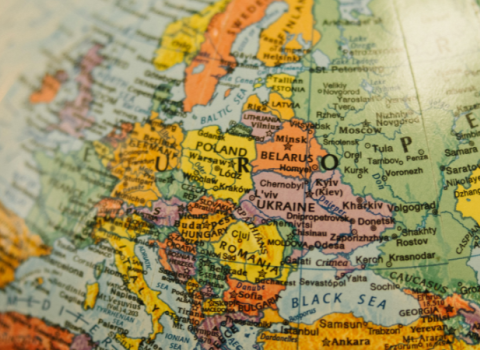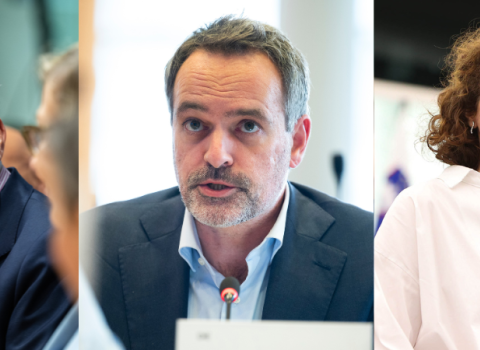Russia removed TalTech’s smart wave buoy from Estonia’s economic zone – without a single obstacle; the incident raises a pressing question: does Estonia truly have sufficient situational awareness in the Baltic Sea, and the capacity to respond swiftly?
When a smart wave buoy, deployed near Hiiumaa by TalTech’s Department of Marine Systems, began behaving erratically in late April, it soon became clear that neither a storm nor a technical fault was to blame.
Analysis of hydrometeorological data, GPS signals, satellite images, and other sources revealed that the device was no longer drifting with the currents or waves. Instead, it was being deliberately guided towards Kaliningrad – where satellite contact abruptly ceased. In plain terms: an environmental monitoring device was removed from Estonia’s exclusive economic zone and taken directly to a Russian military facility.
Unsurprisingly, the case raises a host of questions regarding state response, maritime security, and navigational safety. But more sharply still, it underscores a painful truth: Estonia’s situational awareness of what is happening in the Baltic Sea is limited.
A stark reminder: Estonia needs stronger marine monitoring capabilities
According to Rivo Uiboupin, the director of TalTech’s Department of Marine Systems, this is yet another harsh reminder that Estonia’s marine research, surveillance, and forecasting services require significantly more support and systematic development.
“That strange things happen in the Baltic Sea is no longer surprising. We’ve seen ‘accidents’ with gas pipelines, damage to communication cables, and now the targeted removal of an oceanographic measuring instrument. To me, this clearly shows we are not in control of what is happening near our maritime borders. It’s a direct indication of our poor situational awareness at sea,” Uiboupin noted.
This is precisely where science must intersect with security. Science-based marine surveillance and forecasting services are not merely a matter of environmental science – they are a critical component of a nation’s strategic awareness and readiness to respond to maritime events.
The institute plans to install a new buoy in the same area shortly, as the project requires continuous monitoring of wave conditions. The new device will transmit its location via satellite for as long as it remains operational and has not been deactivated.
Although the stolen buoy did not contain sensitive information, several weeks’ worth of raw data – intended for use in scientific research and the development of marine forecasting services – was lost. According to Uiboupin, the incident once again confirms how vital it is to have a clearer picture of what is occurring in the Baltic Sea and Estonia’s coastal waters.
Maritime situational awareness demands greater attention
The stolen wave buoy was not just a “floater” – it was a purpose-built measuring instrument (officially named LainePoiss) developed by TalTech researchers and students to collect data on wave conditions in the Baltic Sea. This information is crucial for real-time environmental monitoring and for ensuring safe navigation – in other words, for improving maritime situational awareness in its broadest sense.
Uiboupin explained that the buoy was installed as part of a project aimed at establishing a network of wave-monitoring stations in Estonian waters. The project is funded by the Estonian Environmental Investment Centre and supported by the Estonian Environmental Agency and the Transport Administration. Its objective is to enhance offshore activities through a steady flow of reliable data and to provide a more accurate picture of the Baltic Sea’s hydrometeorological conditions.
While permanent wave-monitoring stations do improve awareness, a comprehensive understanding of Estonian waters remains an aspirational goal. “Situational awareness could and should be significantly better. Without it, we are unprepared for environmental accidents, navigation hazards, or other emergencies,” Uiboupin said.
He added that the challenges associated with marine research often remain in the background – and may include both technical and security-related issues, from adverse weather to rising international tensions. The theft of the buoy, he argued, starkly illustrates the need for all parties involved to be fully aware of the risks associated with deploying and maintaining such equipment.
More marine data analysts are needed
Collecting data alone is not enough to improve maritime situational awareness – we also need qualified experts who can quickly and meaningfully interpret information from a variety of sources, generate forecasts, and draw conclusions that support decision-making and rapid response. “This work must be supported by a digital tool that integrates real-time marine data, satellite images, and model-based forecasts – essentially, a digital twin of maritime awareness,” Uiboupin explained.
A fully functioning digital twin for the Baltic Sea would significantly enhance our ability to respond to a range of threats – whether environmental pollution, security incidents, or other risks. Achieving this, however, requires more than just equipment, servers, and technical infrastructure – it calls for investment in human capital, including the training of a new generation of marine data analysts.
This is exactly what TalTech’s Department of Marine Systems is doing. Through its “Earth Systems, Climate and Technologies” curriculum, it trains specialists capable of advancing environmental monitoring and forecasting services and making data-driven decisions based on marine big data. According to Uiboupin, it is one of the few programmes where these topics are addressed both systematically and practically.
In this way, studying the natural sciences and engineering can be part of the solution: improving maritime situational awareness through monitoring and forecasting services begins with recognising that knowledge does not arise on its own – it must be generated, developed, and applied. And sometimes, it takes the theft of a single scientific instrument to remind us of that fact.
This article was first published on 27 May by TalTech´s portal Trialoog.





 A unique international forum for public research organisations and companies to connect their external engagement with strategic interests around their R&D system.
A unique international forum for public research organisations and companies to connect their external engagement with strategic interests around their R&D system.